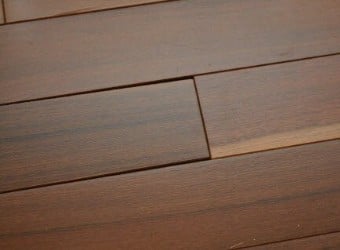6 Ways Humidity Can Affect Your Floors
The National Wood Floor Association (NWFA) states that normal relative humidity levels should range between 30%-50%.
Understanding Relative Humidity
Relative humidity (RH) is the water vapor in the air relative to how much water vapor the air can hold at its temperature, expressed as a percentage. For example, RH at 50% means the air is at half of its water vapor capacity that it can hold.
The National Wood Floor Association (NWFA) states that normal relative humidity levels should range between 30%-50% to ensure successful long-term performance of your wood flooring.
This range can often be difficult to achieve in certain areas of the country during certain seasons. Therefore, Royal Home Flooring recommends the installation and use of a central Humidifying system to help protect your flooring investment & comply with manufacturer recommendations to ensure warranty validation.

Gapping - Cracks - Spaces
When humidity is lower than recommended, your flooring plank shrinks, leaving a gap between each board. Having gaps between your flooring planks is normal, and you should be prepared for it to occur. Once humidity levels rise again, the flooring boards will expand and most gaps will close up again.

Buckling
When your floors are faced with extreme humidity, the excessive moisture causes them to expand and pull away from the subfloor, as high as several inches.

Cupping
Cupping happens when extreme humidity comes from areas below your floor like a basement or crawlspace, causing the edge of your planks to push up higher than the center.

Crowning
Crowning is the opposite of cupping. Crowning is when the middle of the board is higher than its edges. This effect happens because of a moisture imbalance caused over time. One reason your hardwood floors might be crowning is if water sat on the floorboards for too long. Another reason is if your floor was previously cupping and the edges were sanded before it was thoroughly dry.

Cracking
When extensive moisture or humidity causes the wood to expand significantly, adjoining boards start pressing against each other. In extreme cases, this increased pressure can cause the affected boards to lose their structural integrity and crack..

Splitting
When extensive moisture or humidity causes the wood to expand significantly, adjoining boards start pressing against each other. In extreme cases, this increased pressure can cause the affected boards to lose their structural integrity and crack..
How to Protect Your Floors From Humidity
Use a humidistat
It’s important to check the humidity levels in your home using a humidistat, which can be purchased at any hardware store. It’s recommended that hardwood floors stay in an environment where the humidity falls between 30%-50%. If the humidistat reveals the humidity in your home is not in this range, you will need to buy a device to help you control it.
Buy a dehumidifier or humidifier.
A humidifier is used to make the air more humid, while a dehumidifier does the opposite. during the winter, use a humidifier to put moisture back in the air and protect your floors. Humidity tends to increase during the summer, so use a dehumidifier during this season to bring the level down. We highly recommend to buy a professionally installed unit that will control the humidity in your entire home.
Failure to Maintain Moisture and Humidity Will Void All Flooring Warranties
Room temperature and humidity of installation area should be consistent with normal, year-round living conditions for at least a week before installation of flooring. Room temperature of 65-75°F and a humidity range of 30%-50% should be maintained during installation, and at all times afterward. Warning - humidity levels below these recommended levels will likely cause movement in the flooring, including gapping between pieces and possible cupping and checking in the face as mentioned above. Royal Home Flooring and the Manufacturers cannot be held responsible for site related conditions.




